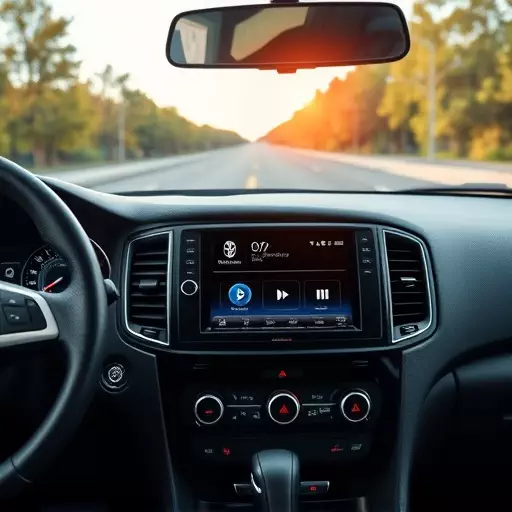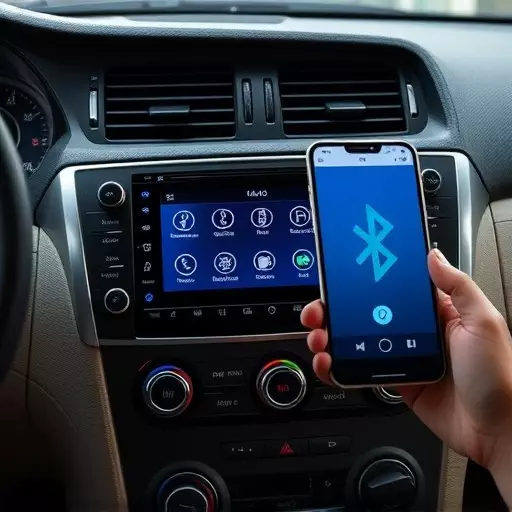Voice control is transforming car audio systems in Toledo, enhancing driver safety through hands-free operation and seamless Bluetooth audio integration with smartphone mirroring. This technology allows drivers to access music, podcasts, and navigation without taking their eyes off the road, while advanced voice recognition promises context-aware interactions for a smarter driving experience. Key features include Siri, Google Assistant, Amazon Alexa compatibility, and simple setup processes for enhanced driver satisfaction during urban cruises.
Voice control is revolutionizing the way we interact with our car audio systems, offering a safer and more convenient driving experience. The future of in-car entertainment focuses on hands-free operation, with voice assistants becoming an integral part of modern car audio systems. This article explores how Bluetooth audio integration and smartphone mirroring enhance user experiences, while also delving into the benefits, popular options, installation process, and safety considerations for implementing this cutting-edge technology, particularly in Toledo.
- Understanding Voice Control: The Future of Car Audio Interaction
- Benefits of Integrating Voice Assistants into Car Audio Systems
- Bluetooth Audio Integration: Seamless Connectivity for Hands-Free Listening
- Smartphone Mirroring: Display and Control Your Phone Directly in the Vehicle
- Popular Voice Assistant Options for Car Audio Systems
- Installation and Set-up Process: A Step-by-Step Guide to Voice Control Integration
- Safety Considerations: Using Voice Control Responsibly While Driving
Understanding Voice Control: The Future of Car Audio Interaction

Voice control is rapidly transforming how we interact with our car audio systems. This innovative technology allows drivers to operate their in-car entertainment and navigation features using simple voice commands, enhancing safety by keeping eyes and hands on the road. By integrating Bluetooth audio and smartphone mirroring, voice control systems offer seamless connectivity, allowing users to access music, podcasts, and navigation without compromising driving focus.
The future of car audio interaction promises even more integration and intelligence. As voice recognition technology advances, we can expect more natural language processing, enabling nuanced commands and context-aware responses. This evolution will make in-car systems more intuitive and efficient, contributing to a smoother, safer, and more enjoyable driving experience.
Benefits of Integrating Voice Assistants into Car Audio Systems

Integrating voice assistants into car audio systems offers a multitude of benefits that enhance both driving experience and safety. With advancements in technology, drivers can now control their music, navigation, and other infotainment features hands-free, ensuring their focus remains on the road. Voice commands allow for quick and intuitive access to various functions, eliminating the need to fiddle with buttons or touchscreens while driving.
This integration also facilitates seamless smartphone mirroring, enabling users to connect their devices via Bluetooth audio integration. As a result, they can enjoy crystal-clear calls, stream music from preferred apps, and even receive navigation instructions directly in their vehicle without any delays or distractions. Moreover, many voice assistants offer contextual awareness, learning user preferences over time and providing personalized recommendations, making long drives more enjoyable and efficient.
Bluetooth Audio Integration: Seamless Connectivity for Hands-Free Listening

Voice control for car audio systems has revolutionized how drivers interact with their in-cabin entertainment. One of the key enablers behind this shift is Bluetooth audio integration, which offers seamless connectivity and hands-free listening capabilities. By seamlessly integrating with smartphone mirroring, today’s advanced car audio systems allow drivers to access their favorite music, podcasts, and navigation apps without taking their hands off the steering wheel.
This technology ensures a smooth user experience by instantly connecting your device to the vehicle’s audio system, enabling you to control media playback using simple voice commands. Whether you’re driving through Toledo or any other urban center, Bluetooth audio integration makes it safe and convenient to stay entertained while on the road, enhancing overall driver satisfaction.
Smartphone Mirroring: Display and Control Your Phone Directly in the Vehicle

Smartphone Mirroring offers a seamless way to display and control your phone directly from the vehicle’s dashboard. With this feature, drivers can easily pair their smartphone with the car audio system via Bluetooth audio integration, allowing them to access various apps and functions hands-free. This technology ensures that drivers remain focused on the road while still enjoying their favorite music, podcasts, or navigation services.
The process is simple yet powerful; once paired, the car’s display mirrors your phone’s screen, providing a familiar interface. Users can scroll through tracks, adjust volume, and even make calls without taking their hands off the steering wheel. This hands-free control enhances safety during journeys, making it an appealing feature for modern drivers looking to integrate their smartphones seamlessly into their car audio system in Toledo.
Popular Voice Assistant Options for Car Audio Systems

The market is flooded with various voice assistants designed for seamless car audio system integration toledo. These intelligent systems allow drivers to control their music, make calls, and access information hands-free, enhancing safety and convenience on the road. Popular options include Apple’s Siri, Google Assistant, and Amazon Alexa, each offering unique features and compatibility with different car brands.
Many modern car manufacturers now come equipped with Bluetooth audio integration, enabling easy smartphone mirroring integration. This feature allows drivers to connect their devices wirelessly, ensuring a steady stream of music or podcasts during their commute. With just a voice command, users can switch tracks, adjust volume, or even make calls without taking their hands off the steering wheel.
Installation and Set-up Process: A Step-by-Step Guide to Voice Control Integration

The process of installing and setting up voice control for your car audio system in Toledo is a straightforward process that can enhance your driving experience significantly. First, ensure your vehicle is compatible with voice control integration. Many modern cars come equipped with Bluetooth audio capabilities, which serve as the foundation for this technology.
If your car doesn’t have built-in support, you can still integrate voice control through Bluetooth audio integration or smartphone mirroring. Start by pairing your smartphone to your car’s infotainment system via Bluetooth. Once connected, download and install a compatible voice control app from the app store. Follow the on-screen instructions for setup, which may include configuring microphone sensitivity, selecting preferred languages, and setting up custom commands. Proper setup ensures smooth interaction between your voice and the car audio system.
Safety Considerations: Using Voice Control Responsibly While Driving

Using voice control for your car audio system can greatly enhance your driving experience by keeping your hands on the wheel and eyes on the road. However, it’s crucial to use this technology responsibly. Safety should always be the top priority when employing voice commands while driving. With integrated Bluetooth audio systems or smartphone mirroring in Toledo, you’re already taking a step in the right direction by ensuring wireless connectivity without distracting from the task at hand.
When utilizing voice control, drivers should remember that it’s essential to keep conversations brief and focus on clear, concise commands. Avoid lengthy discussions or complex tasks that demand prolonged attention. Smartphones and car audio systems equipped with advanced voice recognition can minimize delays caused by incorrect interpretations, but they’re not foolproof. Stay alert and be prepared to take over manual control if needed, ensuring you follow traffic rules and maintain safe distances from other vehicles.


